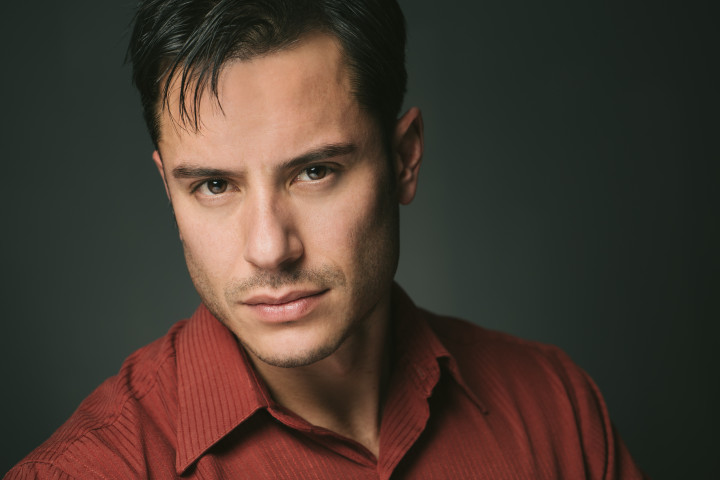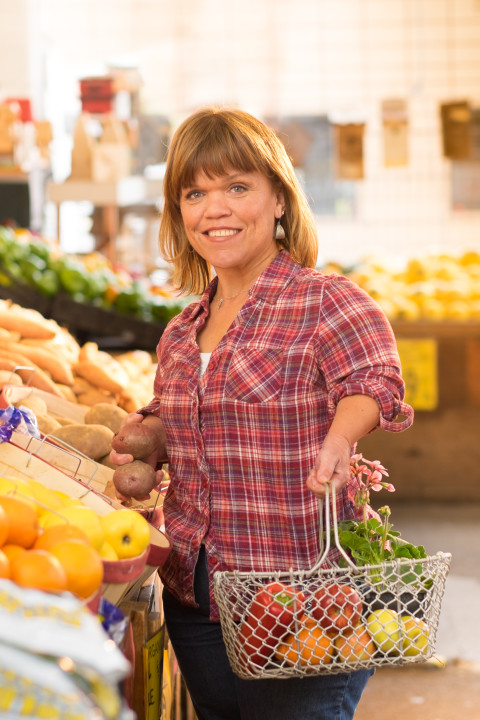Welcome to our series of 100 interviews we will be holding with professional photographers who use mirrorless cameras for work! “Switching to a smaller and lighter system” has become somewhat of a buzz phrase as of late, but many working photographers take this philosophy seriously. From medical reasons such as resolving back and shoulder pain to the simple realisation that bigger does not mean better, photographers are turning to mirrorless systems now more than ever before.
This week’s interview is with Levy Moroshan, a photographer who has worked in the film, TV and entertainment industry for over ten years. He is well-known for his portrait, headshot, commercial and product photography, and is also an accomplished videographer.
Visit Levy’s photography website
Follow Levy on YouTube, Twitter and Instagram
All the images contained in this article are property of Levy Moroshan and may not be reproduced in any way.

1. Who is ‘Levy Moroshan’ in three simple sentences?
Levy Moroshan is a commercial portrait and advertising photographer. His images lean toward a cinematic look that tell a story. And shapes light to add to the feel or mood of the images he creates.
2. You are both an experienced environmental and headshot portrait photographer. What drew you to photographing people in the first place?
I first started shooting landscapes. It just seemed easier then shooting people. With landscapes I didn’t have anyone to please but myself. Working with people I’m responsible for getting images they like first. They’re the ones that have to be happy with the look. The more I worked with people the more I enjoyed the challenge. Most of the time I meet them for the first time the day of the shoot. I have to make them feel comfortable in a short amount of time. I have to gain their trust quickly. I live for that. It’s a thrill when they see the images and love them.

3. Is there a difference in the way you approach environmental portraiture and headshot photography despite the similarities between the two genres?
The main difference is in the amount of time I spend working with the client to get different looks. With headshots, its really close and tight. Even the smallest facial movement makes a big difference. I spend more time getting just the look I want. With environmental images I focus on the person as a whole and the way they interact with what’s around them. Expressions are important, but it’s the image as a whole that’s more important. With a headshot I like a little bit of the person personality to come through. With an environmental portrait I want a story of who the person is or what they do.

4. How do you put your subjects at ease during a shoot?
Each subject is different and I approach each one differently. It might be a bit cliche but I just try and be myself. I’m usually pretty easy going and casual when shooting. I’m always reassuring my subjects and catering to their every need. They get an experience when they shoot with me and at that moment the focus is on them. I find a common like or interest and chat with them about it. Asking them questions is a great way to get them talking and take their mind off the shoot.

5. You use the Sony A7s and Fujifilm X-T1 for much of your work. Which system did you work with before and why did you replaced it with two systems instead of one?
I used to be a Canon shooter. At first I moved over to the Fuji system for the size and weight plus the feel it had to my film cameras. I loved the look of the images from the first time I saw it. That made it possible for me to send clients JPGs right out of the camera with no further editing. I loved that. One area it was lacking was the video features. About a quarter of what I do is video work. I needed something that was a great performer. After using a friends Sony A7s I was hooked. The low light capabilities are incredible. Plus I liked how customizable the buttons and settings were. Recently I’ve been shooting stills with the A7s as well. Both are great cameras.
6. What are the factors that prompt you to choose one over the other for a given shoot?
The main factor is what the final product will be and if I’ll be using strobes or natural light. The A7s had more dynamic range as well. So if I’m shooting natural light I like the flexibility. With strobes I tend to lean toward the XT1 and the look right out of camera with a bit more megapixels.

7. Which are your favourite lenses for each system and why?
For the X-T1 my favorites are the 56mm f1.2 and the 23mm f1.4. Those are easily my go-to lenses for that system. With the Sony A7s I love the performance of the 70-200mm f4 lens. It’s extremely sharp and versatile. Plus I use the Metabones adaptor on the Sony which lets me use my Canon glass on it as well. Since Sony doesn’t have a macro lens out yet I use the 100mm f2.8 Canon Macro. Another favorite for getting detail shots.
8. Sony has the tendency to saturate the market with dozens of similar models whereas Fujifilm is more conservative, preferring to update older models with firmware updates. As a user of both systems, what are your feelings about Sony and Fujifilm’s diverse approaches?
I prefer the Fujifilm approach. Just recently they added a ton of new features to the X-T1 in the latest firmware update. I think that’s why they have such a loyal following. Myself included. I wish Sony did the same thing since I really like their sensors and especially the video quality.
9. Are there any particular features on the A7s and X-T1 that you find useful for your work as a portrait photographer? If so, which ones and why?
The most useful feature of both systems when shooting natural light is the EVF with image preview. I can instantly see the result of any changes I make to the settings and exactly how my subject will look. Extremely helpful in difficult lighting conditions.

10. Could you give us some insight into how you light your images?
When lighting a subject or a scene I start with one light at a time. I usually have a basic idea of what I want the final image to look like. I then add one light at a time till I see in the scene what I’m seeing in my mind. Sometimes it’s just one light. Other times it’s 5 or more. Or even a mix of natural light and strobe. I don’t have a formula, I just go by what feels right.

11. How much post-processing goes into your images?
I came from the film days where I got as much as possible right in camera. That’s the same way I approach my shooting today. Most everything is done in camera. I rarely spend more the 15 minutes on an image. Over the years I’ve created some of my own presets within Lightroom for the looks I use. Sometimes I can batch process an entire shoot and spend no time retouching at all. I’d rather be shooting then sitting in front of a computer.

12. You say you have worked with actors, models and celebrities in recent years. Is there a particularly memorable shoot with a famous individual you’d like to tell us about?
Recently I had the privilege of working with Amy Roloff from the show Little People Big World for the cover of a magazine. Shooting on their family farm was awesome because they had so many different locations on the property to shoot at. A one room school house, pirate ship, western town, etc… I had a great time exploring the location with her and collaborating on a few great ideas. And in the image of the school house you can see my name on the board for people that got detention. I still laugh about that.

13. You also do some video work. Do you use the A7s for video projects as well? If so, how does it perform?
I use the A7s for all my video projects now. It performs fantastic. The dynamic range is great and since native ISO is 3200, low light performance is outstanding.
14. There are many great compact systems out there at the moment. If you hadn’t chosen to go down the Fujfilm and Sony route, would you have chosen another mirrorless system? Which one and why?
I would have probably gone with the Panasonic GH4. I owned that for a few months and was happy with it. Especially with the internal 4K capabilities. It did ok with stills but the video was great. I also liked the touch screen and being able to rack focus by touch.
15. Do you think mirrorless cameras will eventually replace the DSLR as the professional’s primary work system?
Mirrorless is where things are heading. It’s great to see some medium format mirrorless systems as well now. And more to come. I’ve never looked back from my decision to go mirrorless.

Visit Levy’s photography website
Follow Levy on YouTube, Twitter and Instagram
If you have any questions or comments for Levy, be sure to make yourself heard in the comments section below!
